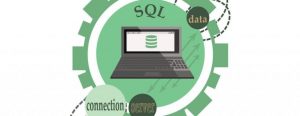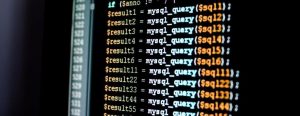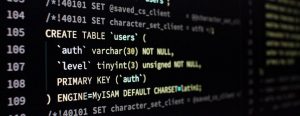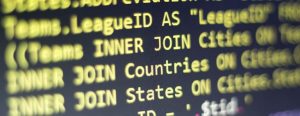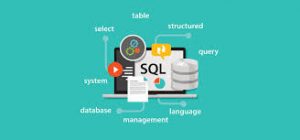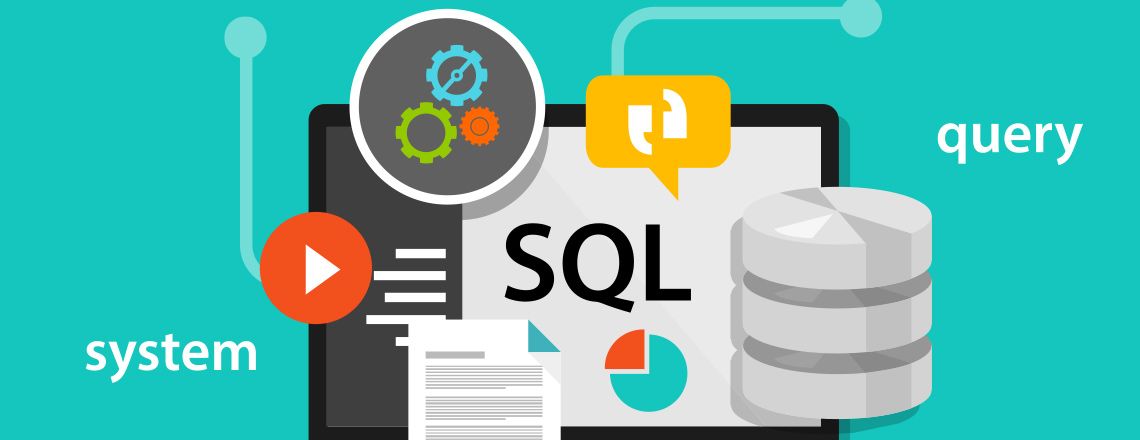
It’s a fact of life: if you want to make a living as a coder, you need to know your way around a database. Developers could never build or maintain functional websites, software or programs if they didn’t have well-honed data collection, management and analysis skills.
But before programmers can use data, they need to know how to access it. SQL, or Structured Query Language, is a foundational tool that allows coders to do just that. In this article, we’ll cover the basics of this core query language and answer the following questions:
- What is SQL?
- Why learn SQL?
- What is SQL used for?
- How long does it take to learn SQL?
- How can I learn SQL from scratch?
- Which careers require knowledge of SQL?
- What else should I learn to complement my SQL skills?
Let’s get started.
What Is SQL?
SQL (pronounced interchangeably as “sequel” and “S-Q-L” in the industry) is a query language that allows coders to find, change or otherwise manipulate information in relational databases. SQL’s utility and easy to learn syntax have long cemented it as a standard language for back end developers and data scientists. The query language can also be used in tandem with scripting languages such as PHP to create dynamic web pages.
Why learn SQL?
If you’re pursuing a career that even tangentially relates to data manipulation or analysis (e.g., back end programming, data science, cybersecurity, etc.,) you need to learn SQL. As mentioned earlier, SQL is the standard query language used to interact with relational databases. If you don’t have this fundamental skill, you’ll be hard-pressed to fulfill your daily responsibilities — or even find an employer willing to hire you.
After all, knowing how to engage with data isn’t optional in today’s job market. Companies in every industry have become increasingly reliant on the insights that data analysis provides; according to a recent report from Technavio, the big data market is expected to grow by $142.5 billion between 2020 and 2024. Knowing SQL could make the difference between landing your dream job and losing it.
Skills covered in these tutorials:
- Databases
- Commands & Functions
- Operators
- Subquery & JOIN
- Revoke Statements
- Rows & Tables
What Is SQL Used For?
Since the 1980s, SQL has been a standard of the American National Standards Institute (ANSI) and the International Organization for Standardization (ISO) for relational database creation, management and manipulation. Using SQL, developers can perform a wide variety of tasks. These include but are not limited to:
- Creating a database
- Inserting new data into an existing database
- Modifying data
- Retrieving data
- Deleting data
- Creating or dropping new tables
- Setting access permissions
- Creating view, function and stored procedures
It is worth noting that SQL is only the standard for manipulating relational databases. Relational databases organize information into tables that are connected according to their common (“related”) data. This structure allows users to better understand how data points are related and gives them the option to find information and generate new tables with a single query.
Non-relational (NoSQL) databases, in contrast, do not store data in rows and columns. As such, these databases typically require other query languages (e.g., Cassandra CQL or Cosmos DB) — though it is worth noting that most of these are actually variations on SQL.
Which Careers Require Knowledge of SQL?
If you’re interested in learning SQL, the chances are good that you probably have a career path in mind — but there’s no reason to limit yourself! Knowing your options can help you broaden your horizons and identify a career path that suits your skills and interests. Below, we’ve listed a few career paths that require SQL knowledge.
Software developer
As their title suggests, software developers are coders who focus on designing, developing and implementing software programs. These professionals work to automate various functions and produce flowcharts to facilitate smooth, efficient operations. Software developers also use databases to store and manage user information, so mastery of SQL is critical.
Database developer
Database developers are responsible for ensuring that database management systems (DBMS) can effectively handle immense amounts of data. Because of the nature of the work, database developers often work alongside software developers. Their responsibilities include but aren’t limited to designing and developing efficient and functional databases, updating and managing existing databases and identifying and addressing database issues as they arise.
Data analyst
Accessing, analyzing and cleaning data are the primary responsibilities of a data analyst. These individuals help businesses and other organizations identify patterns and designs within massive datasets. Data analysts must be proficient in programming, statistics and — of course — SQL.
Data scientist
While data scientists’ job descriptions overlap somewhat with data analysts, the two professions are distinct. Data scientists have a more comprehensive understanding of data analysis, programming and statistics than analysts; these professionals are responsible for teasing strategically valuable insights and conclusions out of data patterns.
Quality assurance (QA) tester
Quality assurance testers are responsible for identifying and addressing coding flaws before a software product goes to market and further ensure that all operations meet established standards and guidelines. Quality assurance testers also prevent, solve and mitigate issues such as website crashes, software viruses and unexpected errors. These professionals often collaborate with developers to promote website or program functionality.
How Long Does it Take to Learn SQL?
Because SQL is a relatively simple language, learners can expect to become familiar with the basics within two to three weeks. That said, if you’re planning on using SQL skills at work, you’ll probably need a higher level of fluency.
How quickly you achieve mastery will depend on your method of learning. If you try to learn SQL independently, the process may take around six months — longer if you aren’t practicing SQL regularly. However, you can accelerate the process by attending an intensive, formalized learning program like a coding bootcamp. If you enroll in one of these, you can expect to gain SQL mastery in as little as three months.
Get Program Info
Intro to SQL — How to Learn SQL From Scratch
Understanding SQL can give you an invaluable edge as a tech professional. Even if you lack experience with web or software development, you can begin learning SQL on your own and start working toward a mastery of the language. If you plan to work with databases in any capacity or want to expand your professional horizons, learning SQL can be immensely productive, if not essential.
Below, we’ve included a breakdown of what you need to know before and while you learn SQL.
What you need to know before you begin
Before you start learning SQL, there are a few points you should know about the language, its capabilities and its limitations.
Practical applications of SQL
Specific SQL applications may vary across roles and industries, but in general, the query language is used to manage databases. Data scientists and data analysts commonly use SQL to upload, query and otherwise organize data into tables. Data engineers may use SQL to assign permissions to data across company members. Most websites use databases to store user data, and many developers use SQL to interact with the information they collect.
Don’t stop learning once you master SQL
SQL is one of the most popular programming languages in use today. However, as we mentioned earlier, it is not the only one used to manage databases. Given the growing need for scalable, non-relational databases, aspiring coders and data professionals may want to complement their SQL knowledge by learning one or more NoSQL query languages.
Start with the fundamentals
Would you give someone learning to read an Old English collection of Shakespeare’s plays? The answer is obvious — because when we start learning, we begin with the fundamentals.
The same holds true with SQL. By focusing on the fundamentals, you can more easily tailor your education and prepare yourself for more complex database work down the road.
Wondering what that looks like in practice? Generally, SQL newcomers should focus on learning how to use database servers — programs that facilitate database management — as well as the standard commands used when navigating databases. Other basic concepts include SQL syntax, queries, modifiers and calculations.
Let’s take a closer look via a few brief SQL tutorials.
Syntax
Syntax refers to the rules that define symbol combinations within a language. For SQL, the syntax varies slightly between single- and multiple-table databases. You will need to understand the syntax for clauses and operations, such as the ones we’ve listed below. Keep in mind that syntax can vary depending on the database, the number of tables and whether or not the tables are partitioned!
UPDATE
You can use this clause to name tables and adjust columns to accommodate the inclusion of new values. In multiple-table databases, the UPDATE clause will update all rows that meet defined conditions once, even if the conditions are met multiple times in a single row.
SET
Coders can use the SET clause to identify the columns they want to update as well as the values they wish to input.
DEFAULT
Applying the DEFAULT clause allows users to reset columns to their initial values.
WHERE
The WHERE clause is used to indicate which rows a user wants to update; failing to use this clause will result in every row being updated.
ORDER BY
Coders can use the ORDER BY clause to define the order in which they want to view rows of data. This clause cannot be used with multiple tables.
LIMIT
Using the LIMIT clause will allow coders to limit the number of rows that are updated via a given command. This clause cannot be used with multiple tables.
These are just a few entry-level examples of the clauses and syntax you’ll need to learn before achieving mastery over SQL.
Manipulating Data
In addition to retrieving and analyzing data, SQL allows users to manipulate the information within a database. Generally, manipulating data refers to inserting, updating or deleting data. You can use SQL to adjust the information present in a database to be more accurate and up-to-date. The commands to do so are relatively simple (“UPDATE” and “DELETE” illustrate this) which makes the process of changing existing data relatively easy and straightforward.
Writing Queries
Queries are crucial because they empower coders to access, manipulate or organize data within a database. “Query” and “command,” in this regard, are often interchangeable. When writing SQL queries, you need to make sure you use the proper formatting and language to guarantee accurate results. For example, if you want to create a new table in a database, you would format it as such:
As you work to master SQL, you will become familiar with the specifications required of query writing. Mastery will naturally come with study and practice!
Aggregate Functions
With aggregate functions, coders can gather data from multiple sources and summarize it for data analysis. Below, we’ve included a few primary SQL functions that users can utilize when aggregating data.
SQL COUNT
Using COUNT will count how many lines of data are contained within a table.
SQL SUM
This function will provide coders with the sum of all data in a column of their choosing.
SQL AVG
Coders can use SELECT AVG to calculate the average value of data in a specified column.
SQL MAX
This is a simple command used to find the maximum value available in a given dataset.
SQL MIN
Like MAX, MIN is a simple command that helps users identify the minimum value present in a given dataset.
All of these functions, except for SQL COUNT, ignore NULL values.
Connecting Tables
SQL users can apply JOINS to combine data from two or more tables by identifying their shared values. There are five major types of joins, all of which are listed below.
INNER JOIN
This type of join returns rows when it identifies matches in both tables.
LEFT JOIN
This returns all rows from the left table regardless of whether there are matches in the right.
RIGHT JOIN
The RIGHT JOIN is the inverse of the left; it returns all rows from the right table regardless of whether there are matches in the left.
FULL JOIN
A FULL JOIN returns rows if it identifies a match in one of the tables.
SELF JOIN
A SELF JOIN considers a single table as if it were two, joining it to itself.
Do I Need a SQL Certification? How Can I Get One?
Strictly speaking, you don’t need a formal SQL certification. In most cases, being able to demonstrate your proficiency via a coding interview or portfolio project will suffice. That said, you can and should obtain an SQL certification if you want to provide concrete evidence of your skills to potential employers and bolster your employability.
It is important to note that there is no standard SQL certification; many of the credentials you can obtain are vendor- or role-specific. For example, you can pursue a SQL certification for T-SQL (which Microsoft and Sybase use) or for data administration, database development or database architecture. In this context, getting certified is less about SQL or SQL programming and more about demonstrating that you have command over specific SQL-based programs or variations.
How to Get a SQL Certification
While you can gain proficiency in SQL via a coding bootcamp, such programs don’t typically offer certification. Your best bet will be to acquire your fundamental understanding of SQL via a bootcamp or self-guided courses, then study for one of the exams linked below.
- MySQL Certification — MySQL
- Oracle Database SQL Certified Associate — Oracle University
- PostgreSQL Certification — Enterprise DB
What Else Should I Learn to Complement My SQL Skills?
Learning SQL will be only part of your development and education, as the roles that demand SQL proficiency will also require other coding proficiencies. Below, we’ve listed a few core skills that should serve as the foundation for your programming toolbox.
Python
Python is an intuitive, open-source scripting language used in creating web applications and content. As an open-source language, Python is free to use and highly accessible; it was also designed to be compatible with various systems, including Mac, Windows, Unix and Java virtual machines.
JavaScript
As of 2020, JavaScript was the most sought-after programming language by hiring managers. It’s frequently used in front end web development to create dynamic, responsive elements such as buttons, forms and basic animations.
Node.js
Node.js is an open-source runtime environment — an infrastructure that facilitates program or application execution in real-time — that allows programmers to use JavaScript in back end (server-side) programming. Node.js empowers developers to write fully-functional, server-side applications with access to a computer’s operating and file systems.
HTML
Hypertext Markup Language, or HTML, is a must-know for those interested in front end web development. Coders use HTML to define the structure and design of each web page within an overall site.
CSS
Cascading Sheet Styles, or CSS, are used in tandem with HTML to format the layout and appearance of web pages. Developers can use CSS to uniformly define the font, color scheme, table size and other design elements across a website.
Django
Django, like Node.js, is a free, open-source framework designed to support and accelerate programming projects in a single language — in Django’s case, Python. Django helps web developers create secure websites quickly; the framework was designed to encourage the use of reusable code and limit unnecessary duplication.
Bootstrap
Bootstrap is a front end framework and design toolkit developed to help coders build web pages and applications quickly. It hosts a variety of HTML, CSS and JavaScript tools that can support a coder’s efforts and minimize the time they need to spend building elements from scratch.
Web Development
If you want to break into the tech sector but aren’t quite sure what you want to do, you should consider learning full stack web development. Full stack developers are versatile, flexible professionals who have command over the server-side databases and logic that give websites their functionality as well as front end design. Their diverse skill sets provide them with a stepping stone to nearly every tech-savvy career you could name, from data analysis to information security.
If you’re interested in learning SQL — or any fundamental coding or data science skills — you may want to consider enrolling in Berkeley Coding Boot Camp or Berkeley Data Analytics Boot Camp. These intensive programs can give you the fundamental skills and practical experience you need to land an entry-level job in the tech field of your choice. You have the willpower and means to build your career skill set; now, you only need to get started.
For more information on what Berkeley Boot Camps offer, please contact us.
Navigate SQL Articles
From basic knowledge to more advanced SQL coding techniques.
Get Program Info
Ready to learn more about Berkeley Coding Boot Camp in San Francisco? Contact an admissions advisor at (510) 306-1218.
 Live Chat
Live Chat
